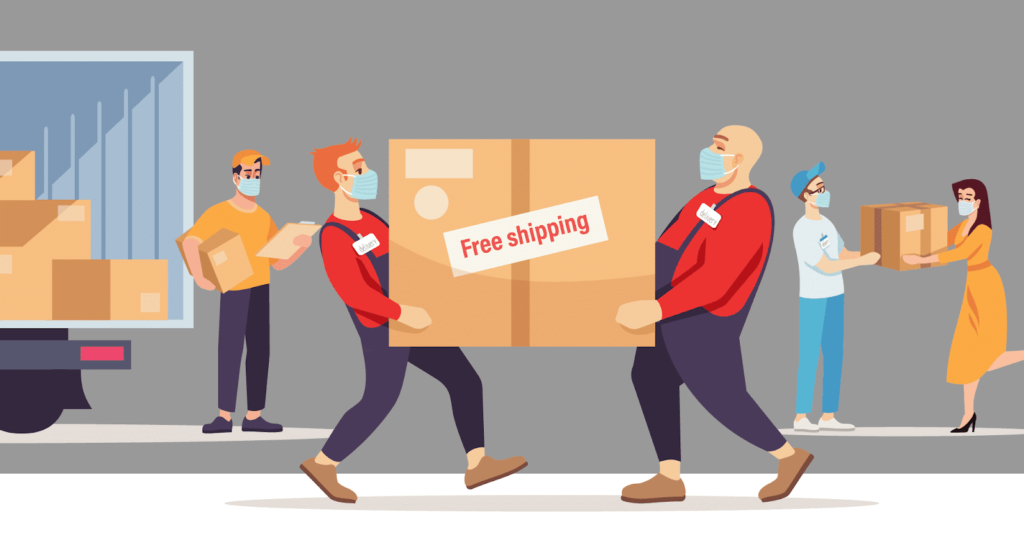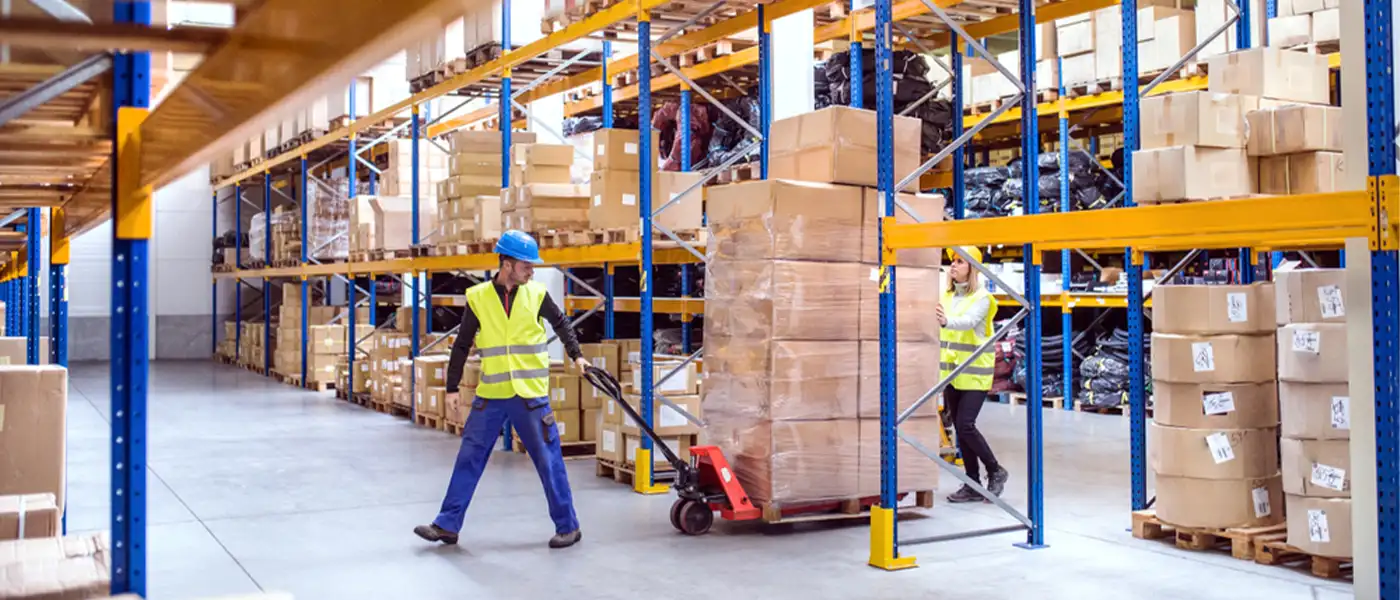The global shipping market is escalating quickly and will continue to rise in the coming years. Shipping refers to the physical transportation of goods from port to destination. It includes the entire journey, which means delivering the commodity from the warehouse to customers till they receive the order.
However, some might confuse it with handling, as it is also a part of shipping. But one should be aware that shipping and handling are two different things. Shipping and handling come in handy whenever a company wants to transfer any goods.
In this article, we’re going to look at the difference between shipping and handling and what are the challenges that come with it. We’ll also be looking at their strategies and how to calculate the cost of each one of them.
What are Shipping and Handling?
Shipping and handling is the entire process of delivering goods from one place to another. It involves packaging, delivering, loading and unloading. But the two approaches cannot be overlapped.
The entire process consists of certain charges incurred throughout the delivery process. Everything is added as an expense in the shipping process, from packaging charges to labor costs. Let’s look at some other differences between shipping and handling.

Shipping vs. Handling: What’s the Difference?
As mentioned above, shipping means delivering the ordered item to customers from the port to the destination. It includes various expenses, including postage, delivery cost, fuel, and delivery timeline. Instant delivery may cost more as compared to two or three days delivery. Now, there also exists some substeps in between shipping. Here the handling process comes into the picture.
Handling refers to the expenses attached to your item’s packaging and ‘handling’. In simple words, handling is a branch of shipping, dealing with packing items for shipping, labeling the article, and loading it onto the truck. The packaging cost might differ as it also gives you the option of customization, which costs more than the standard packing.
Why You Can’t Overlook Shipping and Handling
Although handling is a sub-process of shipping, it cannot be overlooked as packaging and handling the commodity is equally as important as shipping the commodity safely to the destination. The process is necessary from both sides (seller and receiver). Packing the item correctly increases your customer satisfaction and creates a long-term relationship with them. The two processes should not be taken lightly to meet the customer’s expectations.
Top 4 Factors That Go Into Forming a Shipping and Handling Strategy
Shipping and handling are two essential pillars that must be handled with practical strategies and logistics. Several factors make up the entire process. The top factors are-
- Capabilities and resources:
This means that you need to have a clear understanding of the scale of your business. If your SKUs are low, the business has just started, and the volume of orders is manageable, you can go for in-house shipping and handling. But if your business continues to increase, you may move towards shipping and handling as it requires a lot of labor and paperwork.
- Geographic constraints:
Shipping your orders may have different geographical locations spread across the countries or, sometimes, cross-borders. The shipping costs depend on the distance between your warehouse and the point of delivery. The farther the delivery address, the higher the shipping cost.
You need to note that shipping to a long distance charges the customers and businesses. But as the businesses grow, you’ll receive multiple orders from the same location far from the warehouse. That way, the shipping cost could be reduced.
Shipping and handling costs can also be reduced by setting up multiple warehouses in different locations. Warehouses close to the delivery address cost a lot less than longer distances.
- Products sold:
The product you’re selling also affects your shipping and handling costs. The product may have a specific requirement to handle. It could be fragile or combustible. Affected by climate, or even customized. You then have to impose strict handling guidelines on the package.
Another thing could be the manufacturing cost of your product. The shipping and handling costs sometimes coincide with the items purchased at lower prices. This discourages customers from buying a product, leading to fewer customers. In that case, you can suggest customers buy some more complimentary items or offer them a discount.

- Tech stack:
Associating your e-commerce with technology or hiring developer resources to track your shipping and handling can make your process smoother. The technology lets you track real-time and alert your shipping if anything comes in between. You can even share the tracking details with your customers, which ensures complete transparency between sellers and buyers. A study shows that 97% of customers wish to shop from an online store that ensures complete transparency and detailed information about their order.
Challenges to Shipping and Handling
When you start your business, the first thing you may overlook is the shipping and handling process and its expenses. It requires a lot of your time and effort just to pack all the boxes and organize them in your warehouse, let alone shipping.
Some businesses may consider in-house shipping and handling to save expenses. But they don’t realize how much time they spend receiving the order to getting it to rightful customers. For small businesses, you can take the risks of in-house shipping in the same region. But if your business is rising, you may think of 3PL shipping that takes the responsibility from receiving the order to delivery.
Thorough planning and strategizing your shipping and handling can help you lower costs, which you can do in the meantime. But it is not for free, as the entire process requires some capital, and one has to be particular with the expenses calculator. Let’s look at ways to calculate your shipping and handling costs.
How to Calculate Shipping and Handling Costs in 4 Steps
There are many expenses associated with shipping and handling as both processes require some amount of money. Here are some of the easy ways to estimate your shipping and handling costs-
- Determine your delivery time
The estimated delivery time says a lot about shipping costs. Items needing faster delivery charge more money compared to 2 or 3 business days. Orders that must be transported to longer distances within one or two days may even require extra airways transportation. Therefore, always set up warehouses in multiple regions to avoid shipping costs for sellers and buyers.
- Get estimated costs
Working with different carriers can help you differentiate between extra shipping costs. You may even get some special or discount offers for shipping bulk orders. Companies like DHL, Sendle, Auspost, and Ninjavan calculate the shipping charges based on the dimensions of the items. It also depends upon the shipping zones and addresses.
- Determine if any shipping costs will be factored into the product cost
The more expensive the product, the lower the shipping costs, or even free. You should always cross-check how much it takes to ship the product. If the product is cheap, the shipping cost may be similar to the product’s charge or even more.
This decreases customer purchasing and can lead to a decrease in sales. Always roll out various offers and combos, or set a minimum limit for your orders.
- Add handling costs
Handling costs consist of additional labor that goes with the process. These are- taxes, utilities, conveyors, office supplies, warehouse management systems, and many other things. Although the handling cost could be an option, you can always put up the cost on the label if it goes up. How to calculate the cost? Well, the steps are pretty much simplified. Let’s understand it through the example-
Determine the average time (minutes) it takes to prepare each commodity. Divide it by 60 and multiply the obtained result by your hourly charge. For instance, 10 (minutes)/60= 0.16; 0.16*$10 (your hourly charge) = $1.6 handling charge on per item.
Shipping Options that Customers Expect
It is seen that 45% of customers abandon online shopping cards due to unsatisfactory delivery options. Customers have some expectations from shipping, especially in the e-commerce market. Buyers should always create attractive shipping options to entice more customers to their business. Some shipping options could be-
- Flat rate shipping
This means charging a set amount of shipping cost on every order. Shipping cost depends upon the type of product, weight, dimensions, and many other things. To make it equal for every customer, you can set an average amount of cost on every order applicable to all regions.
- Two-day shipping
Two-day or sometimes same-day delivery is becoming more common in business to attract customers. It is estimated that 56% of customers aged 18-34 expect same-day delivery.
This could be done in two ways: air shipping, where the commodity has to be transported from another country, or ground shipping which is more apt for shorter distances and is less expensive.
- Free shipping
One of the most stand-out options is where customers can come to your site immediately. Obviously, it looks as if sellers are actually charging no money for shipping; there are ways to still include it without it coming to the forefront.
- One could be the minimum spending amount on each other
- Two, including the shipping cost within the product price
- And three annual subscription fees for shipping.
90% of the customers buy products from businesses with no shipping cost. This option could be used brilliantly in marketing and help you with customer acquisition.
- Expedited shipping
This means providing your customers with premium shipping services if they don’t mind spending a little extra on shipping. This may include same-day delivery or customized packaging. It boosts the brand’s authority within the market.
How to Outsource Your Shipping and Handling
Small businesses generally keep their shipping and handling in-house due to limited budgets. Shipping strategies are challenging to plan and handle. It requires a separate team to carry out the process efficiently. As the scale rises, outsourcing shipping and handling comes into play. But before getting into outsourcing, you must be aware of –
- When to outsource
You can outsource your shipping anytime you want, but you must evaluate your business by asking a few questions, such as-
Do I have room for SKUs?
Do I have the capital to invest in shipping?
Do I have a place in the warehouse?
How much is the shipping versus product cost?
The answers may differ for many entrepreneurs, but shipping effectively increases your customer base and expands your market.
- What you get with a 3PL
By outsourcing your shipping to 3PL, you get plenty of time to spend on other things, such as planning, strategy making, marketing, advertising your product, increasing your customer base, and many more. 3PL saves time for you and offers you numerous activities such as storage, picking, and packing your order, discounts on bulk shipping, integrated technology that links to your sales channel, access to multiple partners and agents, and many other things.

Conclusion
Shipping and handling are two different procedures that form the pillar for delivering the item safely to the customers. Shipping, on the one hand, is the entire process of transportation, while handling deals with packaging, loading, and ‘handling’ the product.
Both have different expense rates that vary according to the product. In fact, it also takes a reasonable amount of time for any entrepreneur to carry out the process in-house. Therefore, it is always preferred to outsource the two pillars of your business to 3PLs; that saves you time to plan for an additional stuff.
FAQs
Is shipping the same as handling?
No, shipping is the entire process of transporting the item from port to destination. Whereas handling is the branch of shipping that deals with packing, labeling, and loading/unloading items.
What is the difference between shipping and handling and freight?
Freight can be seen as an umbrella that includes both shipping and handling. In freight, the item is being organized for ‘shipment’ in a definite place. Air, marines, or ground could do it. It also includes international trade.
Shipping could be national or international, which takes the order from the port and delivers it to its destination. It could be either commercial or non-commercial.
Handling is a process that comes under shipping, which includes packing, labeling, and loading the item.
Why do I have to pay a handling fee?
The handling fee includes labor and packing, which could vary. Sometimes, handling charges are not included in the item. If you want to customize the packing, it may cost you additional charges.
What is the difference between shipping and transportation?
Shipping takes the order from the port and delivers it to its destination. It could be either commercial or non-commercial.
Transportation is a sub-process included in freight, shipping, and handling.
How do you charge customers for shipping?
The average shipping cost per package can calculate the shipping charges. The more straightforward way is to add up the total cost of shipping per month and divide it by the number of packages shipped in the same period.
Is shipping and handling the same as delivery?
Shipping and handling is the date from which the product leaves the warehouse. In contrast, delivery is the time of arrival of the package at the doorstep.
What is handling and packaging?
Handling is the process of packing, labeling, and handling the item from one place to another.
Packaging is simply packing the item into a box using cardboard, plastic, etc. It is a part of the handling process.
What are shipping and handling expenses?
Shipping and handling include sub-steps, set fees, order value, and taxes. It includes labor, packing supplies, inventory storage, transportation, and delivery.
What do postage and handling mean?
The cost included in packing an item and delivering it through the postal system is called postage.
Handling is a process that comes under shipping, which includes packing, labeling, and loading the item.






